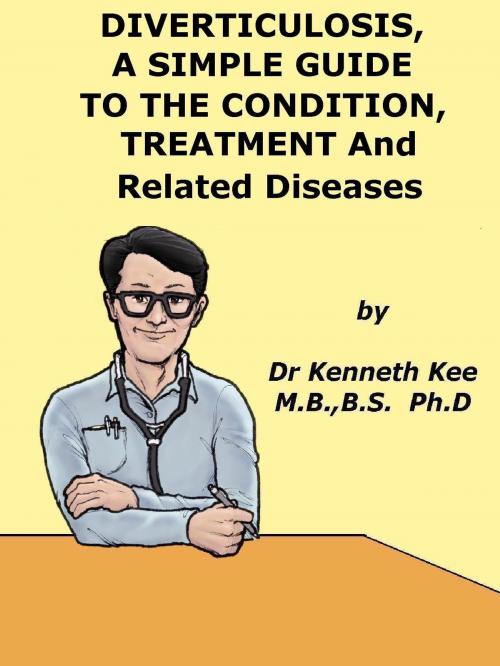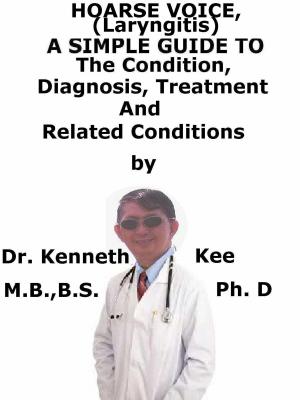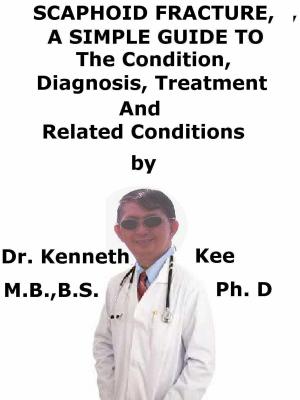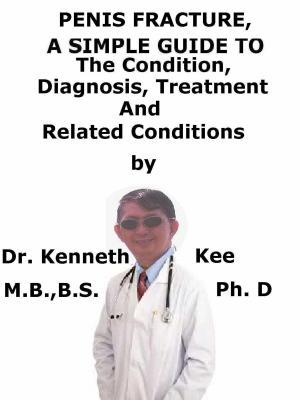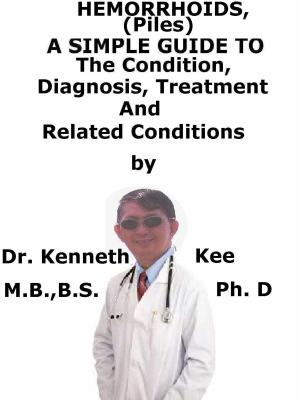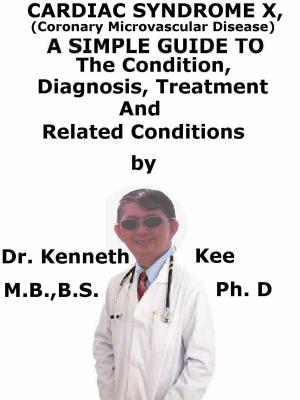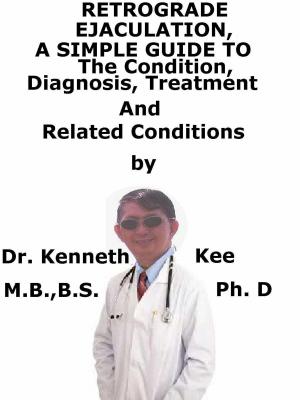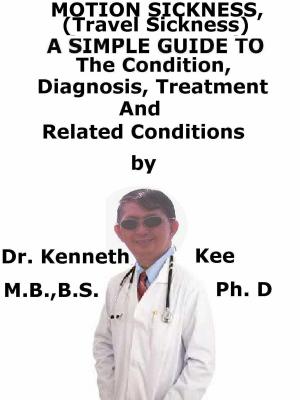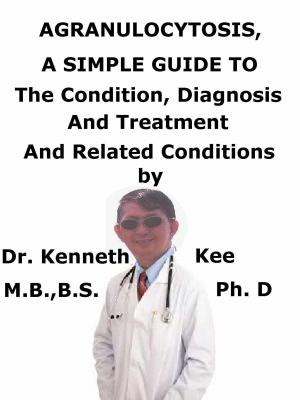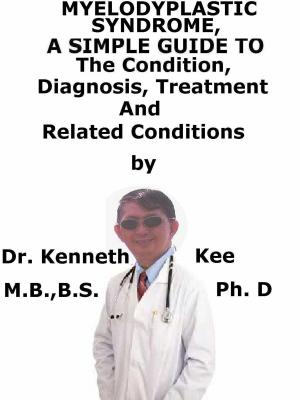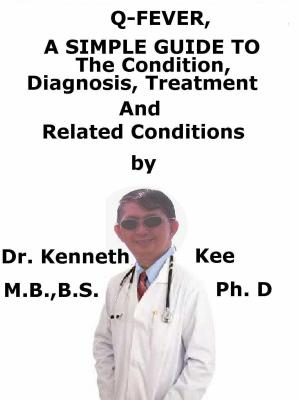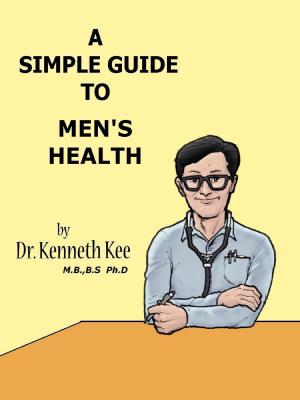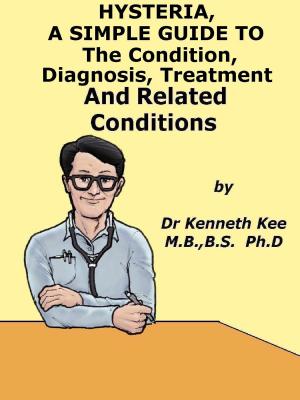Diverticulosis, A Simple Guide to the Condition, Treatment and Related Diseases
Nonfiction, Health & Well Being, Medical, Specialties, Internal Medicine, Gastroenterology, Health, Ailments & Diseases, Abdominal| Author: | Kenneth Kee | ISBN: | 9781311039705 |
| Publisher: | Kenneth Kee | Publication: | December 3, 2014 |
| Imprint: | Smashwords Edition | Language: | English |
| Author: | Kenneth Kee |
| ISBN: | 9781311039705 |
| Publisher: | Kenneth Kee |
| Publication: | December 3, 2014 |
| Imprint: | Smashwords Edition |
| Language: | English |
Diverticulosis is a disorder of the colon
Pouches (diverticula) are present in this condition
It is present in the older age group of people
Also in people who takes a diet of low fiber
Constipation and straining causes weak spots in the bowel mucosa
As a result pouches push outwards at these spots to form diverticula
There are very few symptoms present
There may be bloating or left abdominal pain
The best way of diagnosing diverticulosis is colonoscopy
Examination for blood in the stools by microscopy
Some patients may develop fever and pain from infection
Antibiotics may be needed to reduce the inflammation
Pain medications will relieve any pain symptoms.
Antispasmodic medication for spasm of the colon
Surgery if the attacks are severe or there are complications
Surgery is also done for a perforation or intestinal obstruction
-An original poem by Kenneth Kee
Interesting Tips about the Diverticulosis
A Healthy Lifestyle
1. Take a well Balanced Diet
2. Treatment of Diverticulosis
Medication:
a. Pain medications will relieve any pain symptoms.
b. Antispasmodic medication for spasm of the colon
c. Antibiotics may be needed in diverticulitis and complications such as urinary infection and peritonitis.
Diet:
a. High-fiber diet
b. Whole grain breads and cereals;
c. Fruit like apples and peaches;
d. Vegetables like carrots, broccoli, spinach, carrots, cabbage, and beans.
e. Fiber product such as Metamucil once a day.
f. Avoid nuts, popcorn, pumpkin, and sesame seeds or any food which can cause discomfort
Diverticulitis
a. Antibiotics to treat the infection and inflammation,
b. Resting the colon by bed rest, nasogastric suction and a liquid diet
c. Hospital stay to prevent complications such as abscess.
d. Surgery if the attacks are severe or there are complications.
e. The surgeon resects the affected part of the colon and then joins the remaining sections.
f. Surgery is also done for complications such as a fistula or intestinal obstruction.
g. Emergency surgery may be done for a large abscess, perforation, peritonitis, or continued bleeding.
3. Keep bones and body strong
Bone marrow produces our blood
Eat foods rich in calcium like yogurt, cheese, milk, and dark green vegetables.
Eat foods rich in Vitamin D, like eggs, fatty fish, cereal, and fortified milk.
Eat food rich in Vitamins B and C such as green vegetables and fruits
Zinc and other minerals are important to the body
4. Get enough rest and Sleep
Avoid stress and tension
5. Exercise and stay active.
It is best to do weight-bearing exercise such as walking, jogging, stair climbing, dancing, or lifting weights for 2½ hours a week.
One way to do this is to be active 30 minutes a day at least 5 days a week.
Begin slowly especially if a person has not been active.
6. Do not drink more than 2 alcohol drinks a day for a man or 1 alcohol drink a day for a woman.
Alcohol use also increases the chance of falling and breaking a bone.
Alcohol can affect the neurons and brain cells.
7. Stop or do not begin smoking.
It also interferes with blood supply and healing.
Chapter 1
Diverticulosis
Diverticulosis is a disorder of the colon or large intestine where there are one or more sac-like pouches (called diverticula) in the walls of the colon.
It is more common in the descending and sigmoid colon.
Diverticulosis becomes more obvious with age.
50% of people over the age 0f 60 have Diverticulosis.
The exact cause of Diverticulosis is not known.
It has been suggested that a low-fiber diet is the main cause of diverticular disease.
Diverticulosis is common in developed countries where low-fiber diets are common whereas it is rare in Asia and Africa where people eat high-fiber vegetable diets.
Fiber prevents constipation which can make the muscles strain and increase pressure in the colon.
This increased pressure makes the weak spots in the colon lining to bulge out like pouches and become diverticula.
Diverticulosis is a disorder of the colon
Pouches (diverticula) are present in this condition
It is present in the older age group of people
Also in people who takes a diet of low fiber
Constipation and straining causes weak spots in the bowel mucosa
As a result pouches push outwards at these spots to form diverticula
There are very few symptoms present
There may be bloating or left abdominal pain
The best way of diagnosing diverticulosis is colonoscopy
Examination for blood in the stools by microscopy
Some patients may develop fever and pain from infection
Antibiotics may be needed to reduce the inflammation
Pain medications will relieve any pain symptoms.
Antispasmodic medication for spasm of the colon
Surgery if the attacks are severe or there are complications
Surgery is also done for a perforation or intestinal obstruction
-An original poem by Kenneth Kee
Interesting Tips about the Diverticulosis
A Healthy Lifestyle
1. Take a well Balanced Diet
2. Treatment of Diverticulosis
Medication:
a. Pain medications will relieve any pain symptoms.
b. Antispasmodic medication for spasm of the colon
c. Antibiotics may be needed in diverticulitis and complications such as urinary infection and peritonitis.
Diet:
a. High-fiber diet
b. Whole grain breads and cereals;
c. Fruit like apples and peaches;
d. Vegetables like carrots, broccoli, spinach, carrots, cabbage, and beans.
e. Fiber product such as Metamucil once a day.
f. Avoid nuts, popcorn, pumpkin, and sesame seeds or any food which can cause discomfort
Diverticulitis
a. Antibiotics to treat the infection and inflammation,
b. Resting the colon by bed rest, nasogastric suction and a liquid diet
c. Hospital stay to prevent complications such as abscess.
d. Surgery if the attacks are severe or there are complications.
e. The surgeon resects the affected part of the colon and then joins the remaining sections.
f. Surgery is also done for complications such as a fistula or intestinal obstruction.
g. Emergency surgery may be done for a large abscess, perforation, peritonitis, or continued bleeding.
3. Keep bones and body strong
Bone marrow produces our blood
Eat foods rich in calcium like yogurt, cheese, milk, and dark green vegetables.
Eat foods rich in Vitamin D, like eggs, fatty fish, cereal, and fortified milk.
Eat food rich in Vitamins B and C such as green vegetables and fruits
Zinc and other minerals are important to the body
4. Get enough rest and Sleep
Avoid stress and tension
5. Exercise and stay active.
It is best to do weight-bearing exercise such as walking, jogging, stair climbing, dancing, or lifting weights for 2½ hours a week.
One way to do this is to be active 30 minutes a day at least 5 days a week.
Begin slowly especially if a person has not been active.
6. Do not drink more than 2 alcohol drinks a day for a man or 1 alcohol drink a day for a woman.
Alcohol use also increases the chance of falling and breaking a bone.
Alcohol can affect the neurons and brain cells.
7. Stop or do not begin smoking.
It also interferes with blood supply and healing.
Chapter 1
Diverticulosis
Diverticulosis is a disorder of the colon or large intestine where there are one or more sac-like pouches (called diverticula) in the walls of the colon.
It is more common in the descending and sigmoid colon.
Diverticulosis becomes more obvious with age.
50% of people over the age 0f 60 have Diverticulosis.
The exact cause of Diverticulosis is not known.
It has been suggested that a low-fiber diet is the main cause of diverticular disease.
Diverticulosis is common in developed countries where low-fiber diets are common whereas it is rare in Asia and Africa where people eat high-fiber vegetable diets.
Fiber prevents constipation which can make the muscles strain and increase pressure in the colon.
This increased pressure makes the weak spots in the colon lining to bulge out like pouches and become diverticula.
